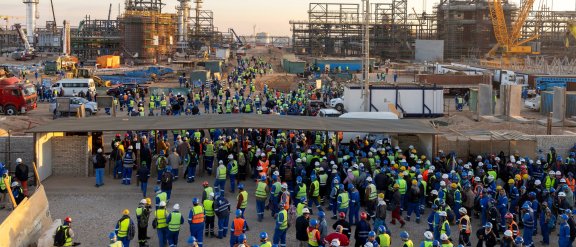WE EMPOWER
Introduction
Our Global Human Rights Policy reflects our commitment to respect and protect the human rights of our employees, suppliers, partners, and communities.
At Technip Energies, we believe that protecting human rights is essential for creating a sustainable supply chain and it is a core value for our company.
Given the complexities of global supply chains, we understand the importance of collaborating with all stakeholders involved in the sector.
Our Code of Business Conduct reflects our commitment to ethical and lawful behavior and recognizes human rights as a fundamental principle.
Our Global Human Rights Policy, signed in December 2023, expresses our commitment to respect and protect the human rights of our employees, suppliers, partners, and communities in accordance with international standards and best practices.
We endeavor to ensure compliance with human rights within the scope of our operations and in accordance with the following international human rights regulations and principles:
- The United Nations Guiding Principles on Business and Human Rights
- The 1948 Universal Declaration of Human Rights
- The International Labor Organization’s Fundamental Conventions.
Challenge
Risk assessment and mitigation
To address the human rights challenge within our operations, we adopt a risk-based approach to identify and map human rights risks and implement effective mitigation measures.
Stakeholder engagement
During the tendering phase, we utilize a dedicated Human Rights Risk Mapping Tool which enables us to identify potential risks early in the process and to address them appropriately throughout project execution.
Subcontractors and suppliers are subject to a human rights pre-qualification process to identify current and potential risks.
We have developed a set of human rights KPIs aimed at monitoring performance during operations which are being integrated into contractual requirements. Field assessments are designed to drive improvement and equip suppliers with the right tools and processes.
As part of this proactive approach, we held our second ESG Supplier Council and the first ESG Subcontractors Council to foster sustainable and ethical practices. This event provided the opportunity to engage with suppliers while specifically emphasizing the importance of human rights due diligence. It signifies a concerted effort within the industry towards heightened awareness, engagement, and tangible action.
Solution
A clear grievance mechanism
To mitigate Human Rights risks, we identified in 2023 ten EPC projects under execution eligible for human rights mitigation in Egypt, India, Qatar, Mexico, Saudi Arabia, and the UAE. In 2025, this number increased to 12 and these new eligible EPCs are mitigated under our Human rights program.
We have assessed workers’ welfare conditions at our construction sites and identified areas for improvement, such as accommodation conditions in the camps, grievance mechanisms in all projects, social welfare awareness sessions, and creating new communication channel like social toolboxes to get direct feedback from the workers on their working and living conditions.
We have also engaged our main construction subcontractors in a Stakeholder Engagement Program to communicate our expectations on social issues and encourage best practices in the industry.
To understand the site work environment, we have created an additional channel to hear from the site workforce. An online survey, available in the languages of all the workers and accessible via a QR code, has the scope to assess opinions, identify areas for improvement, and propose appropriate actions.
Results
For the construction of the Assiut Hydrocracking Complex Project, in Upper Egypt, the first challenge was to recruit and house over 3,000 workers on site. Despite its desert location, we were able to recruit 42% of subcontracted workers from the local area, ahead of our 30% target.
From the very beginning of the project, workers were informed about their rights and duties, and a clear grievance mechanism was established to allow workers to bring any issues to the attention of management and to be treated anonymously, fairly, and with respect.
This mechanism provides us with a real insight into what is happening on site.
